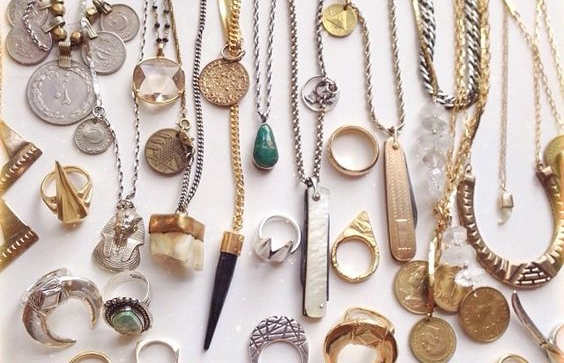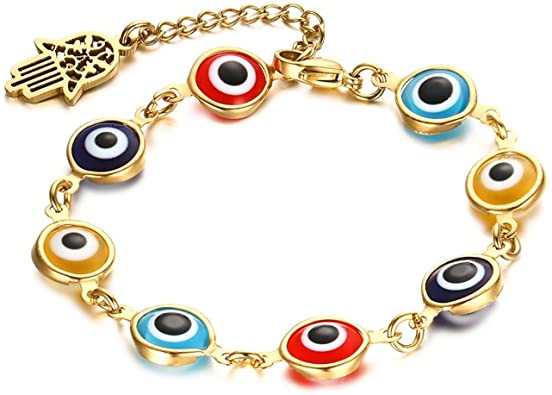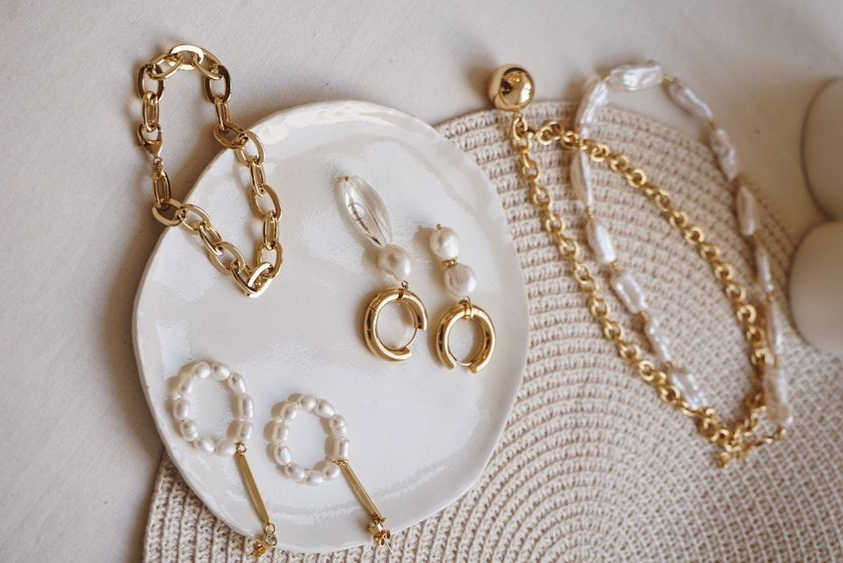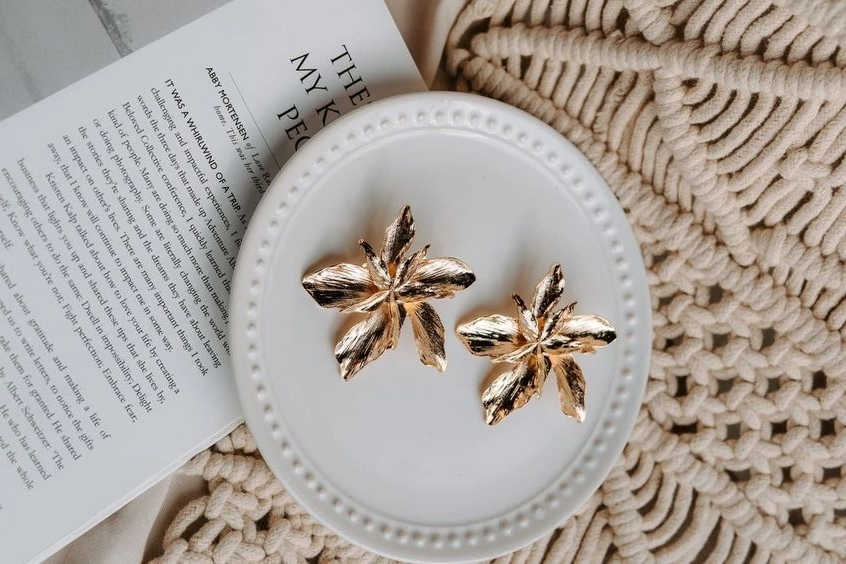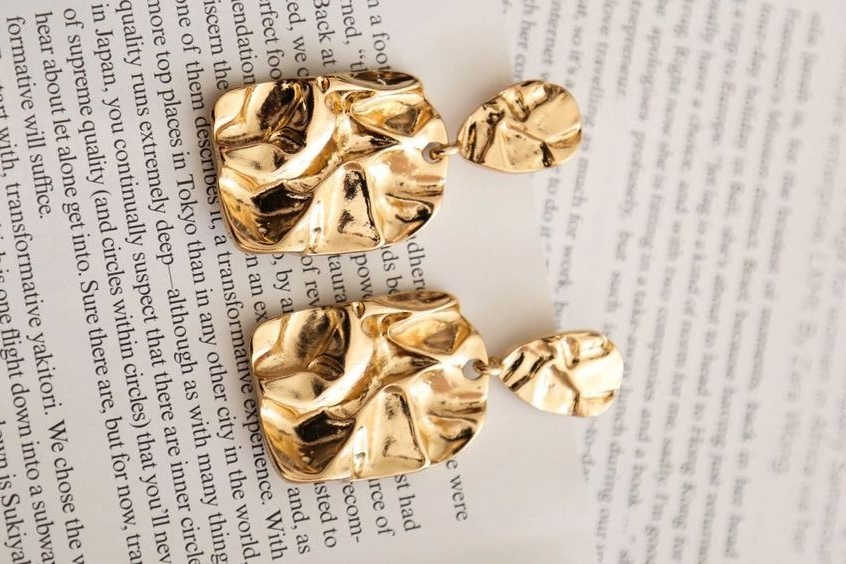What Jewelry Considered As Costume Jewelry?
Costume jewelry is simply a cheaper alternative to fine jewelry. The reason is, costume jewelry is designed to imitate fine jewelry but is made using cheaper materials. The idea can be traced back to the 18th and 19th centuries. Around that time, the Europeans’ appetite for fine jewelry had grown immensely leading to jewelers looking for more cost-effective alternatives. As a result, they began experimenting with glass and other cheaper materials.
By the 20th century, costume jewelry gained wide acceptance and popularity thanks to jewelry designers like Coco Channel. This was when the term Costume Jewelry was coined, where the costume was used to mean ‘outfit’. This type of jewelry was the kind women bought to go with specific outfits/costumes or in other words what they were wearing. Given their inexpensive designs, costume jewelry was common in the market and used for daily wear. This was opposed to “real jewelry” which were treated as investments, heirlooms, and keepsakes.
Even today, costume jewelry is still referred to as pieces made with inexpensive material and designed to imitate finer pieces. They can also be referred to as fashion jewelry, although fashion jewelry refers more to the designs that are currently trending. While costume jewelry is cheaper alternatives, there are some high-end costume pieces as well, although even these are still a slight fraction cheaper than the real jewelry.

What Jewelry Metals Or Materials Used In Costume Jewelry?
The beauty about costume jewelry is that being mimics of fine jewelry, it can be difficult to tell them apart especially for the untrained eye. As we have mentioned before, the materials used to make costume jewelry are cheaper and of lower quality. These pieces are therefore not built for everyday use, otherwise, they may end up breaking or fading away. Therefore, the biggest difference between the two types of jewelry is the kind of materials used to make them.
On one hand, fine jewelry is made using precious gemstones, crystals, and metal. These include gold, platinum, and diamonds among others. On the other hand, costume jewelry uses simulated gemstones and crystals like rhinestones, cubic zirconia, and Lucite. Other materials used include glass, plastic, leather, animal ivory, wood, or acrylics.
I term of metal pieces, during the world war II era, the main metal used for costume jewelry was sterling silver. Today other cheap non-precious metals are also used including brass, lead, copper, iron, even nickel. In most cases these non-precious metals are used as based metals and coated with more valuable metal, to mimic fine jewelry. The coating is done through, plating, filling, vermeil, dipping, or rolling a thin layer of valuable metal over the base. Some of the common metals used for coating include gold, platinum, rhodium, and sometimes silver.
Although the materials used in costume jewelry are not as durable, if made right and maintained properly they can last for a long time. That way, people can look stunning in their jewelry for half the price it would cost them for finer jewelry.
Does Costume Jewelry Make Me Look Cheap?
It’s not an uncommon sight, a woman wearing emeralds the size of a small child’s fist. And when they’re hanging from Angelina Jolie’s ears, chances are they’re real. When they show up at the office Christmas party, unless you work for royalty or Liz Taylor, it’s safe to assume they’re costume.
What difference does it make, aside from whether it costs your child’s college fund? There are lots of high-end fakes that look remarkably like the real thing. When the industry rakes in a few billion dollars a year, you know there are far more massive ruby brooches out there than there are people who can afford them.
What to Look For
What distinguishes the woman looking great in costume diamonds from the one you want to save from her own bad taste? It typically comes down to two factors: what she’s wearing, and how she’s wearing it. What she’s wearing is perhaps the easier set of characteristics to define.
It’s fairly straightforward: finishes and gems
Finishes are the colored coatings that turn the chain, setting, French hooks, clasps and all other metal components into, typically, silver or gold tones. Of course, some high-end costume pieces actually are silver or gold. Those are the relatively expensive ones, and are sometimes referred to as “bridge” jewelry. They can run into the thousands of dollars and often sport very real-looking fake stones.
More often, we’re talking about the cheaper stuff — “fashion” jewelry, which you can typically pick up for under a $100 (sometimes way under). In those pieces, the metals usually aren’t precious, and finish quality can vary dramatically. What you want to look out for is the cheap, flimsy coating you can scratch off with a finger nail. That stuff looks cheap, acts cheap and is cheap.
Typically, the nicer pieces will be electroplated in real silver or gold. That’s when manufacturers chemically bond a thin film of precious metal to a base of non-precious metal. It’s a higher-quality finish that looks good and stands up to normal wear.
That’s the background, and it’s a crucial component in wearing cheaper jewelry without looking cheap. The other major factor is the centerpiece — the gem.
Pros And Cons Of Costume Jewelry
While costume jewelry may be referred to fake jewelry by some people, they aren’t all that bad. There are some advantages to owning costume jewelry just as there are some disadvantages. The following are some of the main pros and cons of costume jewelry:
Pros Of Costume Jewelry
- It is pocket-friendly. Given that the materials used are inexpensive, the price of costume jewelry is significantly affordable. Also, since it’s designed to mimic fine jewelry, you get to look stunning without breaking your bank or surpassing your budget.
- Readily available. Given that the cost of production is cheap and the materials used aren’t hard to come by, there is a wide variety of costume jewelry. There are many stunning designs to choose from.
- The best alternative for designer jewelry. Like we’ve mentioned, not everyone can afford expensive jewelry. That doesn’t mean that you should miss out on designer looks. When done right, you can’t tell the difference. That means you can enjoy expensive-looking jewelry for half the price.
Cons Of Costume Jewelry
- It isn’t durable. The materials used aren’t strong and durable. They can easily break and the plating done on them fades over time, causing the jewelry to lose its appeal.
- It isn’t valuable. Costume jewelry uses inexpensive materials so that the pieces can be bought at more affordable prices. The resale value however is very low. It’s therefore not the best option if you’re looking at jewelry as an investment.
- It is not hypoallergenic. The base metals used in costume jewelry are likely highly reactive metals or contain traces of such metal as nickel. This makes them unsafe for individuals with metal sensitivity or sensitive skin.
- Require a lot of maintenance. You may need to constantly keep polishing or replating costume jewelry to maintain its luster and appeal. You also need to be careful about how you wear them and where your store them because they could be easily damaged.
How to Buy Vintage Costume Jewelry?
Condition
Don’t take the condition of a vintage jewelry item for granted. Sure, vintage jewelry from the Victorian era through the 1930s can have a very vintage look to it (meaning it doesn’t look “new”). But there are times when you can find jewelry from the ’40s, ’50s, and ’60s in like-new condition or very lightly worn. Even with older pieces, don’t settle for second best.
FEATURED VIDEO
4 Adorable Last-Minute No-Sew Costumes for Halloween
Extremely worn plating, darkened or cloudy rhinestones, missing parts, clasps that don’t work properly, missing stones, and chipped or scratched enamel all lower the value of a vintage piece. Obvious repairs such as sloppy soldering and haphazard stone replacements should also be avoided. That can mean close inspection is necessary to see some of these important details, so take care when examining online photos. Don’t pay top dollar in a fit of last-minute shopping desperation for a piece in poor condition.
Look for Quality
If you find a bargain piece of low-quality jewelry that’s kitschy and fun, and you absolutely love it, go ahead and purchase it. But overall, buying vintage costume jewelry of quality makes sense. Quality pieces will hold their value and wear better over time. Look for signs of quality such as substantial weight, smooth plating, and sparkling stones.
Certain manufacturers are known for creating jewelry of quality as well: Eisenberg, Schiaparelli, Miriam Haskell, and Schreiner are a few names to look for when purchasing high-end pieces. More moderately priced signatures include Weiss and Kramer among many others. Should a vintage jewelry purchase always be “signed”? Not necessarily. There are even more beautiful unsigned pieces available on the secondary market, including those made by DeLizza & Elster known as “Juliana” by collectors, and all the aforementioned companies marketed unsigned jewelry at one time or another. It really depends on who you’re buying for since an avid costume jewelry collector will appreciate a signature far more than someone who values the piece simply as a fashion accessory.
Consider Personality
If you’re buying for yourself, consider the types of jewelry you feel comfortable wearing. Size, durability, color, and overall style will influence your purchases. For example, clear rhinestone brooches look fabulous on denim shirts and jackets so even the most casual dresser can enjoy a little glitz now and then, while colorful vintage brooches of all types complement business attire. When buying gifts, it doesn’t make sense to buy your 15-year-old niece a huge rhinestone brooch if you never see her wearing pins larger than the size of a quarter. And will your aunt who dresses boldly wearing flashy jewelry appreciate a pair of dainty rhinestone earrings? Not so much.
Add a Special Touch to Gifts
Ask the dealer you buy from to give you some background information on the piece you’re purchasing. This can include the designer or manufacturer, age or era of the piece, distinguishing design characteristics or materials used in construction, and background on the former owner (also referred to as provenance), if known. Print out these details on a small card you can tuck in the box with your gift. To someone who knows little about vintage jewelry these tidbits are priceless and make owning a piece even more meaningful.
Whether you’re just wanting a fashionable-for-the-moment look for yourself or a gift for a jewelry collecting friend, there are some great sites to shop online for quality vintage costume jewelry ranging from the Victorian era through the 1970s. These reputable dealers also carry collectible contemporary jewelry from the best designers around.
Expensive-looking costume gems can be made of a variety of materials and take countless forms. They may closely resemble diamonds, rubies, pearls or emeralds, or they may create a look all their own. It’s perhaps easier to define quality costume gems by what they’re lacking, namely: paint, foil backing, and lightweight plastic. And they’re not glued on — they’re prong-set or hand-tied.
With an eye out for materials and mountings, classy costume jewelry is pretty easy to spot. Wearing it with class, on the other hand, can be a bit more complicated.
Tips For Wearing Costume Jewelry
To ensure you effortlessly pull of wearing costume jewelry, here are a few tips you should keep in mind while wearing these pieces:
Try fun trends
Jewelry keeps evolving with each passing day. New trends like mismatching earrings and stacking necklaces keep coming up. While it may not seem like it at first, some of these trends can be impractical. The beauty of costume jewelry, however, is that they are inexpensive. That means you wouldn’t have incurred a huge loss should you hop on a trend and happen to hate it.
Play around with color
Simulated gemstones can come in many colors, which is another beautiful thing about costume jewelry. Even the metals coating vary from silvery white to rose or yellow gold. This is your chance to experiment and play with color. You don’t have to stick to the boring clear diamond on white gold or yellow gold neckpieces.
Experiment with different materials.
Costume jewelry isn’t just made with metal and gemstones. You also have the options of wood, leather, ivory, or beaded pieces. They each have a different appeal and they are all affordable. Try them and see what you like.
Match the outfit with the jewelry
Remember costume jewelry was created to match your outfit. To avoid looking tacky, match your jewelry with the right outfit. If you wearing casual clothes, pair them with casual jewelry as opposed to fancy ones. While some people can pull of sweats and a fancy set of jewelry, it is not a look for everyone, so just stay on the safer side.
How to Wear Costume Jewelry?
The thing about wearing baubles, beads, and all sparkling things is, genuine materials or not, it’s easy to end up looking overdone. When including costume jewelry in your style, the best way to avoid coming off cheap is to follow one simple rule: Less is more.
You can have the most beautiful costume ruby necklace and turn it into an imitation nightmare by adding a ruby ring, ruby bracelet, ruby earrings, two gold chains, a pearl choker and a ruby-and-sapphire headband. Matchy-matchy is usually kind of tacky, and, as they say, how classy a woman looks is inversely proportional to the number of rings she wears.
- Keep it simple. If you’re wearing a particularly large piece of jewelry, treat it as a focal point. That means only one necklace, and perhaps one or two other “background” pieces, simple gold hoops, or a few silver bangles, for instance. You can wear a larger number of subtle pieces at once without looking cheap, but even with simple jewelry, it’s wise to edit. A thin gold chain can look a bit street-walker when you pair it with 20 more just like it.
- Aside from limiting your jewels to a few well-chosen pieces, looking expensive in the inexpensive can also come down to:
- Size — Unless you’re royalty, you probably won’t look classy in a lemon-sized “diamond.” Keep it small and tasteful.
- Color — If you’re going for an expensive look, a hot-pink or lime-green stone can be tough to pull off. To be safe, stick with colors in the natural-stone spectrum.
- Outfit — Most people look cheap pairing a 10-carat “ruby” with sweats and a t-shirt. Sure, a lucky few in Beverly Hills can make it work, but most people do well wearing fancy jewelry with evening wear and casual jewelry with jeans.
One other thing to think about when wearing affordable jewels: Some people have allergic reactions to certain inexpensive metals. Before you wear a costume piece for a night on the town, make sure you’re not allergic to the chain or setting. No one looks expensive in a rash.
Ten articles before and after
How to Choose the Wedding Jewelry?
3 Tips About Choosing Bracelets For Men And Women
How To Choose A Diamond For Your Pendant?
The Ultimate Guide for Men Jewelry
20 Rules for Men When Wearing Jewelry
Do Women Really Need Jewellery? Why Jewelry is Important to Women?
How to Clean the Ruby Ring? How to Store the Ruby Ring?
What do Ruby Rings Symbolize? What is July’s Birthstone?
A Guide To The Symbolism Of Jeweled Stones-How Do I Choose My Own Meaningful Jewelry Stones To Wear?
Can I Propose With A Ruby Ring? Why Would I Choose A Ruby Ring To Propose?
